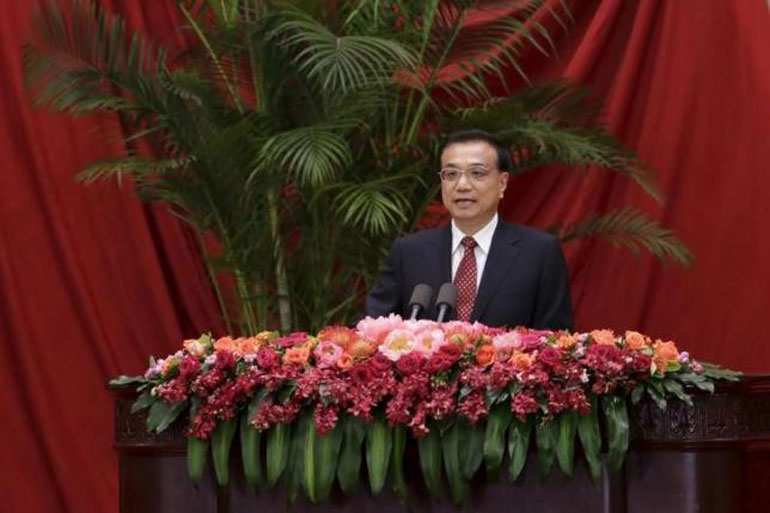Monday Jan 13, 2025
Monday Jan 13, 2025
Monday, 26 October 2015 00:00 - - {{hitsCtrl.values.hits}}

China has never said the economy must grow seven percent this year, Premier Li Keqiang said in comments reported by the Government ahead of a key meeting this week that will set economic and social targets for the next five years.
Li’s comments coincide with remarks by a top Central Bank official, who said on Saturday that China would be able to keep annual economic growth at around 6-7% over that period.
The statements come at a time of growing concern in global financial markets over China’s once mighty economic juggernaut.
China cut interest rates for the sixth time in less than a year on Friday. Monetary policy easing in the world’s second-largest economy is at its most aggressive since the 2008/09 financial crisis, as growth looks set to slip to a 25-year-low this year of under 7%.
China’s economy grew 6.9% in the July-to-September quarter from a year earlier, data showed last week.
Speaking on Friday at the Central Party School, which trains rising officials, Li said the economic difficulties ahead for China should not be underestimated.
His report to the annual meeting of parliament set this year’s GDP growth target at about 7%.
“We have never said that we should defend to the death any goal, but that the economy should operate within a reasonable range,” the central government paraphrased Li as saying in a statement released on its website late on Saturday.
Chinese leaders will signal that growth is their priority over reform by setting a growth target of around 7% in the next long-term plan, policy insiders say.
The party’s central committee will meet from Monday to Thursday to set out the 13th Five-Year plan.
Nevertheless, while the focus is on growth, China is still moving ahead on financial reforms.
Besides cutting interest rates on Friday, the People’s Bank of China (PBOC) said it was also freeing the interest rate market by scrapping a ceiling on deposit rates.
The change, which Beijing had promised to deliver for months, will in theory allow banks to price loans according to their risk, and remove a distortion to the price of credit that analysts say fuels wasteful investment in China.
It should also offer some reassurance to financial markets after they were unsettled by the chaotic responses to the country’s recent stock market plunge and then a yuan devaluation.
The deposit rate reform builds on the introduction of deposit insurance, creating space for smaller banks to compete with their bigger rivals
It is seen as a long-term step toward a more market-driven banking sector, if smaller banks lend funds to parts of the economy shunned by large banks.
“New normal”
China’s economic growth has not been bad over the last year considering the problems in the global economy, Li added.
There were reasons for optimism going forward, such as rising employment, more spending on tourism and a fast growing service sector, Li said.
“The hard work of people up and down the country and the enormous potential of China’s economy gives us more confidence that we can overcome the various difficulties,” he said.
While the government has flagged a “new normal” of slower growth as it tries to shift the economy to sustainable, consumption-led growth, official data shows it has consistently at least met, and mostly exceeded, the growth targets it sets.
Beijing needs average growth of close to 7% over the next five years to hit a previously declared goal of doubling gross domestic product and per capita income by 2020 from 2010.
But the stock market turmoil and unexpected fallout from the modest yuan devaluation have raised fears among policymakers that an abrupt slowdown in growth could spark systemic risks and destabilise the economy.